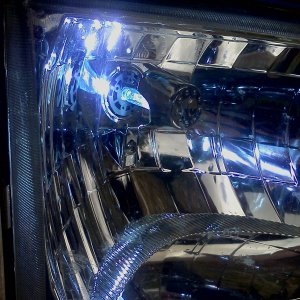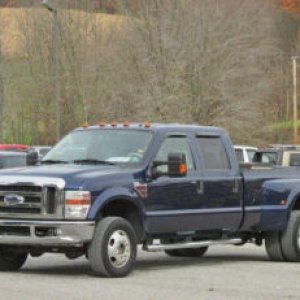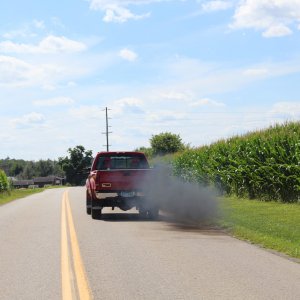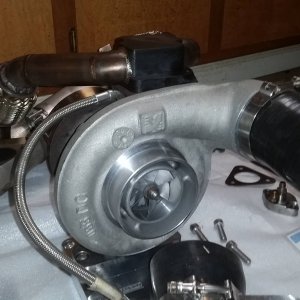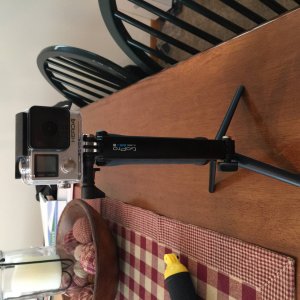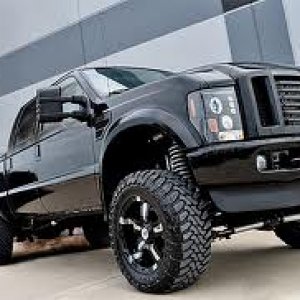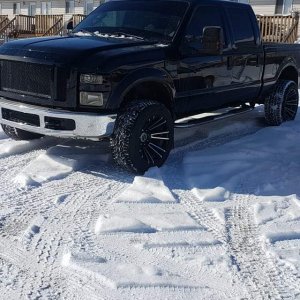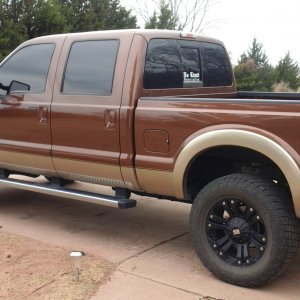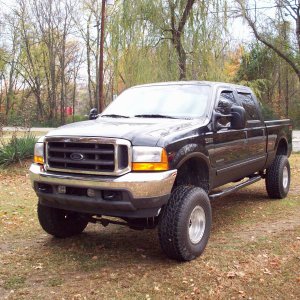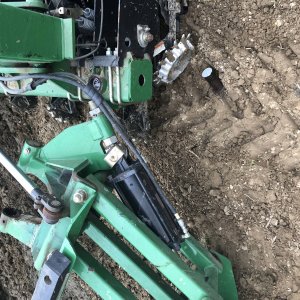No one is bashing your HPOP setup Joey. No need to get defensive and throwing out big names as some type of proof of I am not sure what.
Seriously, listing one setup that have run dual hpops whether they have a big name like WOP or not as proof that the stripping the threads out of the timing cover ( NO ONE SAID THE BOLTS WERE NOT STRONG ENOUGH BTW) is akin to showing a a couple life time smokers that do not get lung cancer as proof that smoking tobacco does not cause lung cancer. FACT absolute 100% fact numerous people have stripped out the cover threads installing dual hpops even those that were the very first time. We can go on over and pull them up with a search on PSN TDS etc. Further if you look at what I stated you will clearly see I stated it was from the TQ procedure and mostly a issue of the past.
I also was very clear on the only reason I felt there COULD be an issue and it was VERY SPECIFIC to a certain use of that vehicle. Yet it rather interesting that you almost never hear of someone doing that ( stripping the threads) installing single pump after single pump unless they were taking the on and off many many times over the years. Just saying.
Again, I clearly state the main reasons for this was the older designs where you were having to use those two bolts clamping force to keep all the parts together (both hpops and manifold or whatever the tech name for that piece is). That your units and for customer purposed perm bonded together.
Its a bit irritating when I take the time to try and not rustle peoples feathers, go out of my way to be very clear about things being issues of the past and the only minor thing I have an issue with is for a situation 99% of people out there will use yet someone has to come on and act as if their product was insulted when it fact most everything positive was said about it.
I mentioned as many have about dual IPR remote setups etc for the Gen 3 but you do not see Dave running on here listing big names as proof. Why is it unless your product is only seen as perfect you feel the need to be defensive. WHy can't you just be happy being the only producer of inline HPOPs that run well and has a excellent rep for CS and standing behind his product? Seriously is that not enough?
Pulling oil from the galley, I am sorry but its all the same oil from the same pump. Its not as if the oil is going to atmosphere its still a closed system. No matter what its got to get to the res somehow. As long as pressure in the block locations stays with spec you can choose to do what ever you want but do not insulate its hurting anything unless you have proof.
I thought you ran compounds at some point or still Joey where would be be getting that extra oil from for the other turbo? Not the BLOCK!?!
Melling less volume that the OEM (NEW)??, sorry if I do not take your word on this as I have also done that exact same thing and got the opposite results on a relatives truck both new as I bought a Melling not knowing he had gone to Ford. We put the new Ford one on another of the companies trucks instead of his personal one which we pulled it off of after month when we replaced his water pump. Not saying I could not be wrong I could be for sure or that we could both get different results But I would need to know the exact specs of all that went on as there are many variables in these setups and especially if you are just looking at pressure.
Further I did a fairly low milegae swap out on m X a couple years ago and I saw my pressure go up a good bit in the res with duals switching from stock to Melling @ under 80K on my X. I can not give the exact mileage as I do not recall so I am fudging it more as it was likley is the very low 70s. I now have another 30K on it and the pressure is still just as high so its not something that seems to wear quickly. Maybe at 150-200K range sure.
These are gerotor designs. You have the inner gear lobes in the tight tolerances for seal with the outer while they rotate and the oil volume is that which is between the lobes in the volume of open space. These are fix displacement pumps so for each rev a certain volume comes out.. If you want to take a look at a paper detailing georotor pump design and modeling I think you will see a statement such as quick glance will show why the stock pump is higher volume is not quite right. Especially if you applied basic logic the melling would again seem to move more volume when you take basic design into account. Look at the volume difference between the two pumps i.e. the free space volume where fluid goes. Measure it and see which one holds more.
Take read on this paper which lays on the basics on georotor modeling and comparisions:
http://www.academia.edu/3132721/Modeling_and_simulation_of_gerotor_gearing_in_lubricating_oil_pumps
As inlets and outlets are fixed as are center lines as its the same location and engine it comes down to the volume and lobe angles min and max chamber volumes etc.. its quite a bit. Read the paper and you will see its anything but simple
Looking at just free volume here is a comparative photo where it is abundantly clear there more volume if that is the sole determining factor in the Melling but what one would consider with a look at had a basic mechanical understanding
It would also seem clear with its design there is less shearing and aeration. But if you do not believe me go do just as I have done and I think Dave @ Swamps has done the exact same thing as I am sure others have. Go fill each up with oil and see which one holds more volume..
Here is a clear animation that shows how the pump fuctions and the effects of the volume area of the pump:
You know what I think would be interesting and who would likely know and have done the most testing. Bob@ dieselsite. I would have to believe he not only tested the stock but for sure the Melling during his design and testing of his high volume LPOP. After all it would be an embarrassment to produce a pump that a off the shelve pump that is less than 1/16the cost of his pump could outperform it. You know damn well he made sure it could. I think it would also be interesting to see the lobe sets of his pump. I for one have never seen the gear side of his pump. Only the pic of the outside on his site and what others posted.
But at the most basic sense of these pumps look at the total volume for a given diameter of the circle and compare. I think you will find the Melling has more volume.
I sure have yet to here of a single person seeing a volume drop when they installed a Melling. But you are correct as I am sure you would point out these are almost always cases where the stock pump has seen many hours of use
Edit to add: these pumps are not effected by pressure on the outlet side until it gets into the 1000's of psi unless of course they have heavy wear. Thus in terms of outlet pressure at the pump all things being the same( that part is key) pressure would indicate volume in this case. I do very much understand your point though Old Dave. We also see it with high pressure fuel pumps. But these are a different design and that plays into greatly.. Just as you would use a gear pump for high pressure such as hydraulics for power steering and not used a georotor as you would loss seal and effects on volume with the pressure limits of them. If I miss understoof your post or am off on what you were describing I appologize
